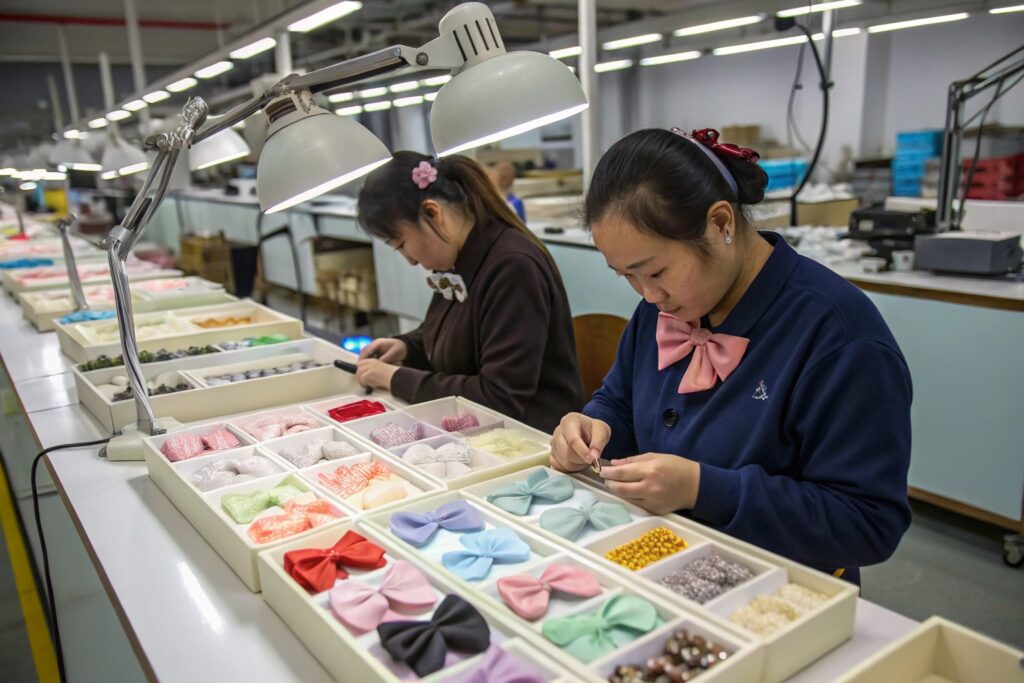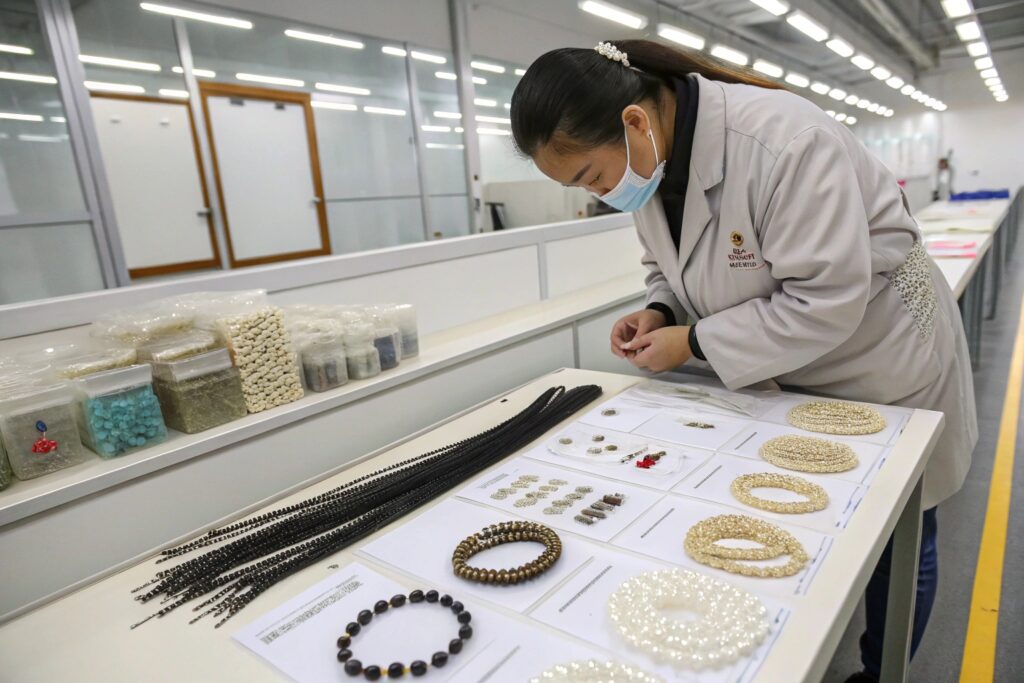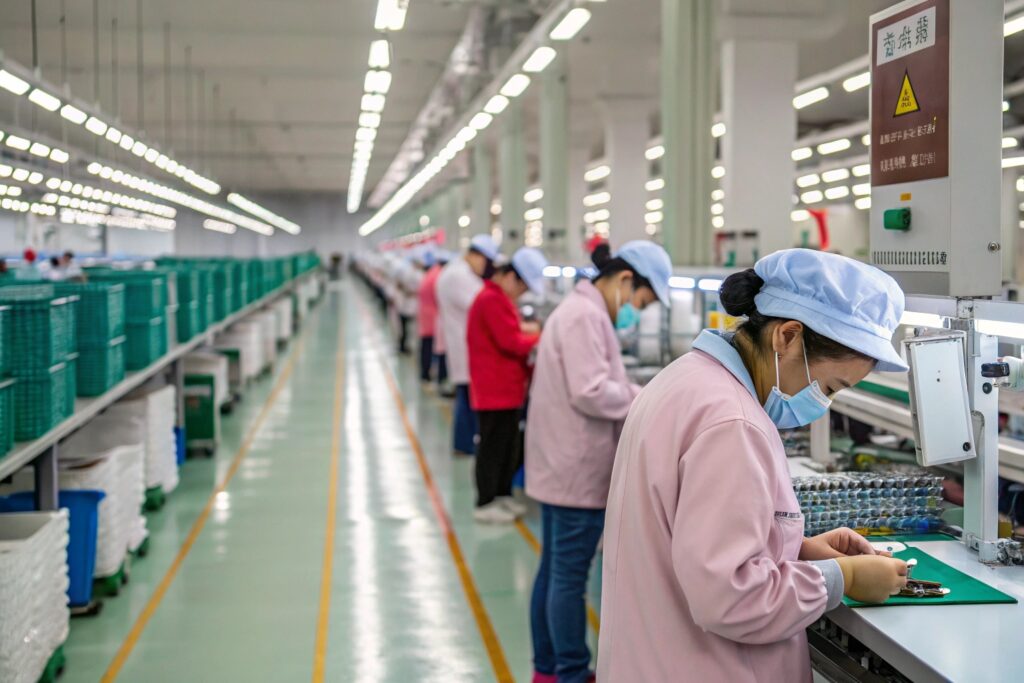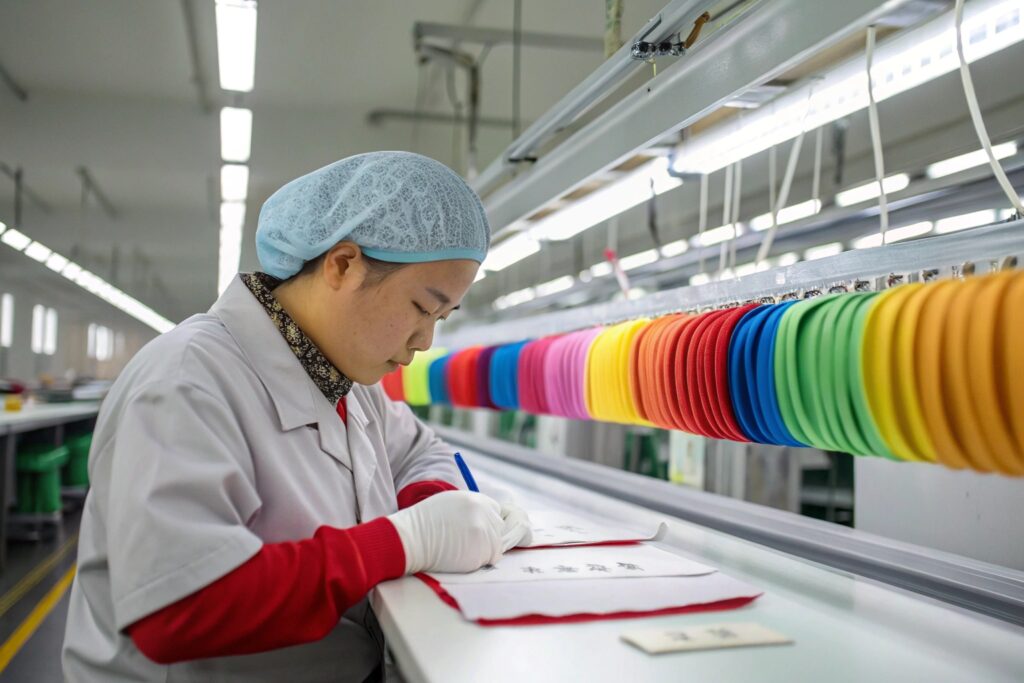You're frustrated with inconsistent orders—one batch of headbands arrives perfect, the next full of defects. You spend weeks managing returns, and your online reviews are suffering. But the problem isn’t always your design or logistics. It’s often a factory without proper in-house quality control.
Partnering with a hair accessories manufacturer that has dedicated in-house QC (Quality Control) teams ensures better consistency, fewer mistakes, and more buyer trust.
At HairAcc, we’ve built our own QC department right inside the factory. We don’t wait for problems—we prevent them.
How In-House QC Teams Improve Product Consistency?
You’ve probably worked with factories that claimed "100% quality assurance"—until 15% of your bow clips arrived chipped. That’s because without in-house QC, promises mean nothing.
In-house QC teams monitor quality during every stage of production—from raw materials to packaging—ensuring consistent, approved results in every shipment.

Why is quality inconsistency so common in accessories?
Hair accessories, especially plastic or fabric-based, are prone to tiny flaws that snowball in mass production:
- Uneven heat during molding = warped claw clips
- Poor glue curing = detached embellishments
- Color bleeding from poorly dyed fabric
Only factories with in-house inspectors catch these issues early. At HairAcc, our QC team checks:
- Incoming material batches
- Sampling accuracy
- Line-by-line inspection during molding/sewing
- Finished product quality
- Carton integrity and barcode accuracy
| QC Stage | What It Catches | Frequency |
|---|---|---|
| Raw Material Check | Wrong or inferior material batches | Daily per lot |
| In-Line Inspection | Loose stitches, missed glue points | 3x per shift |
| Final QC | Packing, labeling, count mismatch | Before shipping |
We don’t outsource this. Our inspectors report directly to the production head, not salespeople.
What Quality Inspection Steps Should a Factory Follow?
Most buyers don’t ask factories how they inspect goods. They just assume inspection is included. But not all QC is the same—especially when it’s outsourced or rushed.
A serious hair accessory manufacturer follows structured steps: pre-production checks, during-production audits, and pre-shipment inspections.

Which quality steps matter most for hair accessories?
Let’s break it down from a buyer’s point of view:
-
Pre-Production Check (PPC)
Ensures right materials, molds, and embroidery patterns are set.
Avoids last-minute surprises. -
First Article Inspection (FAI)
The first few pieces are checked in full.
Confirms samples match bulk. -
In-Process Quality Control (IPQC)
Ongoing checks during production to catch issues early.
Saves cost and avoids large-scale waste. -
Pre-Shipment Inspection (PSI)
Final check before loading. Packing, quantity, barcode, labeling.
Essential for Amazon or supermarket requirements.
Real story from HairAcc
A U.S. client ordered 20,000 satin headbands with a gold-stamped logo. Our in-house QC found that the supplier who provided the foil sheets had changed to a lower quality batch. Before even starting the production, our PPC team flagged it. We re-sourced the correct foil—no delay, no returns, no lost money.
Benefits of Choosing Hair Accessory Suppliers with On-Site QC
Not all QC systems are equal. A third-party agent might inspect just 5% of goods at the end. They won’t know how the workers stitch or mold, or whether the material supplier is reliable.
A factory with on-site QC teams builds a culture of quality—where each worker knows defects will be spotted quickly and feedback is immediate.

What makes on-site QC more effective than third-party?
- Real-time detection – Issues are caught within hours, not days
- Integrated training – QC teams help improve worker habits
- Sample-to-bulk continuity – Same QC people who saw the sample, watch the mass production
- Less paperwork, more action – Communication is internal, no email delays
HairAcc’s on-site QC unit includes:
| Role | Responsibility | Frequency |
|---|---|---|
| Raw Material Auditor | Check material specs, certificates | Every inbound lot |
| Process Line Inspector | Watch over molding, sewing, gluing lines | Per station |
| Pre-Packaging Checker | Carton sealing, labeling, barcodes | Daily |
| QC Supervisor | Compile reports, flag recurring issues | Weekly |
How QC Reports Help Buyers Avoid Product Quality Issues?
Ever received goods that didn’t match the sample? And when you complained, the supplier claimed: “We checked, all good.” But they can’t show proof.
Detailed QC reports provide transparency—so buyers see what was inspected, by whom, and what corrective actions were taken.

What should a proper QC report include?
- Photos of product at each stage (materials, line, finished)
- Checklist of tests performed (tensile, stretch, dye-fastness)
- Batch pass/fail summary
- Corrective actions taken
- Inspector name and date/time
HairAcc provides digital QC reports with every bulk order. You can see exactly how many items were inspected, what minor issues occurred, and what actions were taken before shipping.
Bonus benefit for Amazon or supermarket sellers:
Our QC reports often serve as proof of quality compliance for big retailers. Some clients even include report excerpts in their B2B presentations to gain buyer trust.
Conclusion
If you want consistent, scalable, and trustworthy headwear production, your first question should be: “Does this factory have in-house QC?” At HairAcc, our quality is built from within—so you don’t pay for mistakes after the fact.









